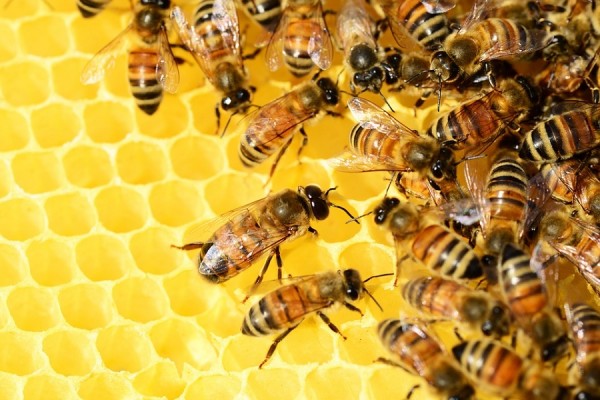By Ana Verayo, | February 08, 2016

European honeybees spread the Varroa mite virus to other beehive populations around the world.
Scientists have been beyond baffled since major honeybee populations across the globe are mysteriously dying. Recent research link parasites and pesticides specifically neonicotinoids in this rapid decline in bee numbers.
However, in this new study carried out by University of Exeter and the University of California, Berkeley, scientists reveal another surprising factor threatening the entire bee species: a virus that is inadvertently spread by humans.
Like Us on Facebook
This viral disease is also the main source of the Defomed Wing Virus that has been spreading around bee hives and colonies all over the world. Researchers have determined that this insect pandemic in European honeybees is largely caused by human trading of bee products and transportation of bees.
This virus is spread out by Varroa mites who are the carriers, as they feed on bee larvae where the virus itself ultimately kills the bees. According to lead author of the study, Lena Wilfert from the University of Exeter's Centre for Ecology and Conservation, they have discovered crucial evidence that humans play a major role in the spread of this epidemic.
Wilfert says that if this epidemic is naturally spreading around the world then transmitting the disease would have occurred between close regions or nations but this New Zealand virus population was traced back to Europe. This is now strong evidence that human transportation of bees are spreading this deadly disease.
In this new study, researchers investigated the sequence data of viral samples that were obtained from bees around the world and those carrier mites. Using this data, researchers were able to track the path of the virus, determining how this epidemic began in Europe and travelled to North America, Australia and New Zealand.
Scientists also pinpointed that the European honeybees were the main culprit of this virus. Wilfert says that there should be more regulations and limits when it comes to bee movement even if they carry Varroa or not.
Beekeepers should also be able to take all the steps in controlling Varroa mites in their hives as the viral disease can also affect other wild pollinators as well.
According to co-author of the study, Roger Butlin from the University of Sheffield, the domestication of honeybee colonies is essential for agricultural systems however this new study reveals that there are serious risks when it comes to moving animals and plants from different ecosystems around the world.
The consequences of this can be devastating and dangerous such as the introduction of new pathogens and viruses, that can not only affect humans but also animals and wildlife as well.
This new study is published in the journal Science.
-
Use of Coronavirus Pandemic Drones Raises Privacy Concerns: Drones Spread Fear, Local Officials Say

-
Coronavirus Hampers The Delivery Of Lockheed Martin F-35 Stealth Fighters For 2020

-
Instagram Speeds Up Plans to Add Account Memorialization Feature Due to COVID-19 Deaths

-
NASA: Perseverance Plans to Bring 'Mars Rock' to Earth in 2031

-
600 Dead And 3,000 In The Hospital as Iranians Believed Drinking High-Concentrations of Alcohol Can Cure The Coronavirus

-
600 Dead And 3,000 In The Hospital as Iranians Believed Drinking High-Concentrations of Alcohol Can Cure The Coronavirus

-
COVID-19: Doctors, Nurses Use Virtual Reality to Learn New Skills in Treating Coronavirus Patients







